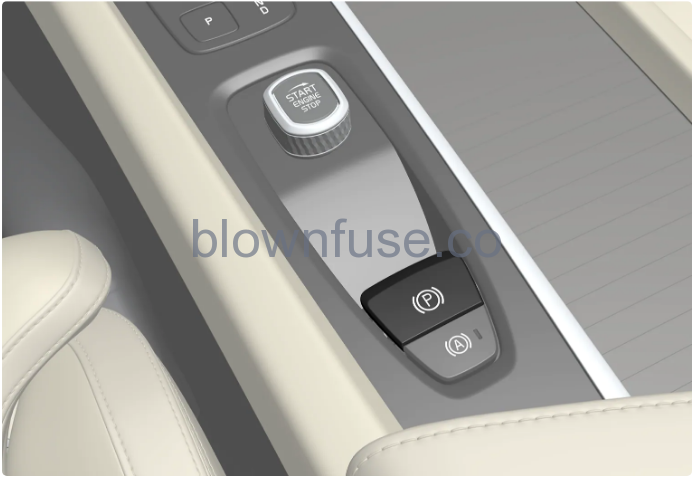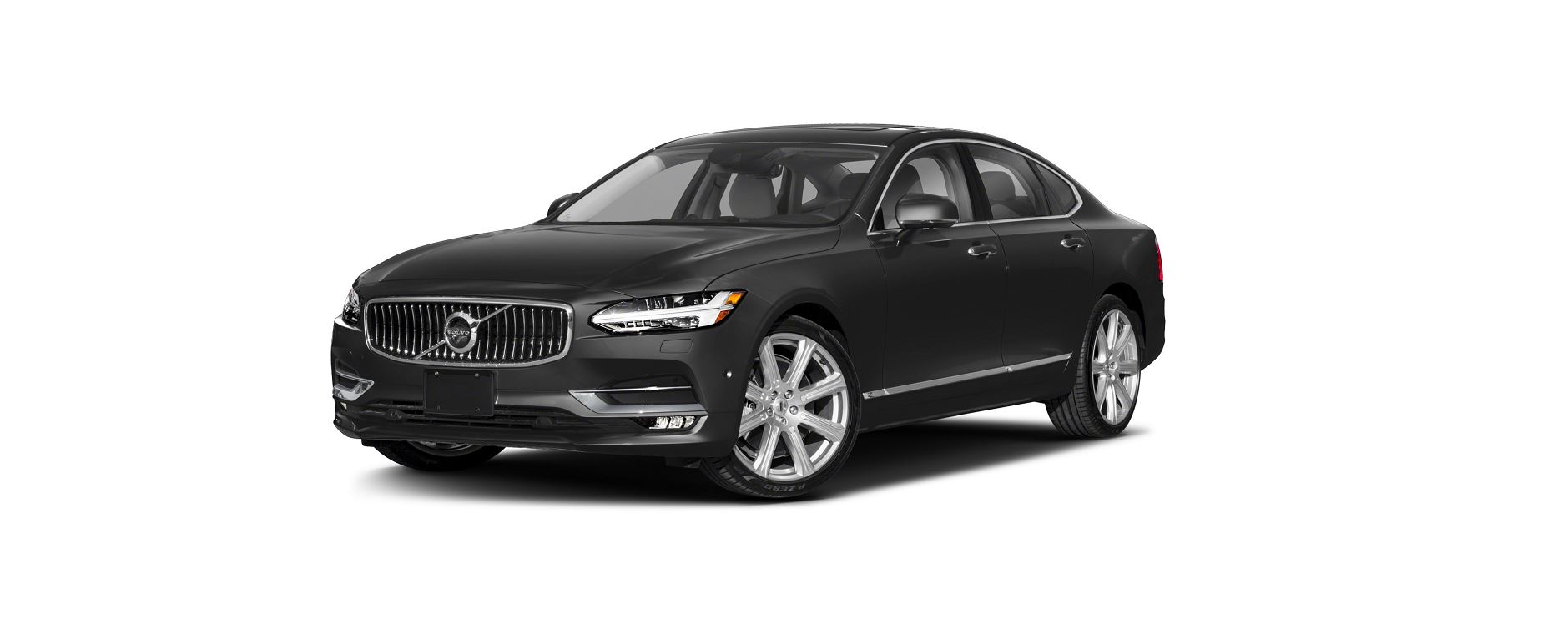

- The control for the parking brake is located in the tunnel console between the seats.
- A faint electric motor noise can be heard when the electrically-operated parking brake is being applied. The noise can also be heard during the automatic function checking of the parking brake.
- If the car is stationary when the parking brake is activated, it only acts on the rear wheels. If it is activated when the car is moving then the normal foot brake is used, i.e. the brake acts on all four wheels. Brake function changes over to the rear wheels when the car is almost stationary.
Activating and deactivating the parking brake
- Pull the control upward.
- The symbol in the driver display illuminates when the parking brake is activated.
- Check that the car is stationary.
| Symbol | Specification |
|---|---|
| | The symbol is illuminated when the parking brake is activated. If the symbol flashes, it indicates a fault has occurred. Read the message in the driver display. |
The parking brake is activated automatically
- when the car is switched off.
- when gear position P is selected on a steep hill.
- if the automatic braking when stationary (Auto hold) function is activated and
- the car has been stationary for a long time (5-10 minutes)
- the car is switched off
- the driver leaves the car.
Emergency brake
In an emergency, the parking brake can be activated when the car is in motion by pulling and holding up the control. Braking stops when the control is released, or if the accelerator pedal is depressed.
An acoustic signal sounds while emergency braking is active at high speeds.
- To deactivate the parking brake, the engine needs to be running.
- Depress the brake pedal firmly.
- Press down the control.
- The parking brake releases and the symbol in the driver display extinguishes.
- Start the car.
- Depress the brake pedal firmly. Select gear position N, D or R and depress the accelerator pedal.
- The parking brake releases and the symbol in the driver display extinguishes.
For automatic deactivation, either the driver has to have put on their seatbelt or the driver door has to be closed.
Parking on a hill
Always use the parking brake when parking on an inclined surface. Engaging a gear or the automatic transmission’s P position is not sufficient to hold the car stationary in all situations.
If the car is parked facing uphill:
- Turn the wheels away from the kerb.
If the car is parked facing downhill:
- Turn the wheels towards the kerb.
A heavy load, such as a trailer, can cause the car to roll backward when the parking brake is released automatically on a steep incline. Avoid this by pulling the control upwards while driving the car away. Release the control when the engine achieves traction.
In the event of a fault in the parking brake
- Contact an authorised Volvo workshop if it is not possible to deactivate or activate the parking brake after several attempts.
- An acoustic warning signal sounds when driving with the parking brake activated.
- If the car must be parked before a possible fault is rectified, then the wheels must be turned as for parking on a hill and the gear selector must be in position P.
If the battery voltage is too low then the parking brake can be neither deactivated nor activated. Connect a donor battery if the battery voltage is too low.
The rear brake linings must be replaced at a workshop due to the design of the electrically-operated parking brake – an authorised Volvo workshop is recommended.
| Symbol | Specification |
|---|---|
| | If the symbol flashes, it indicates a fault has occurred. See the message in the driver display. |
| | Fault in brake system. See the message in the driver display. |
| | Information message in driver display. |



